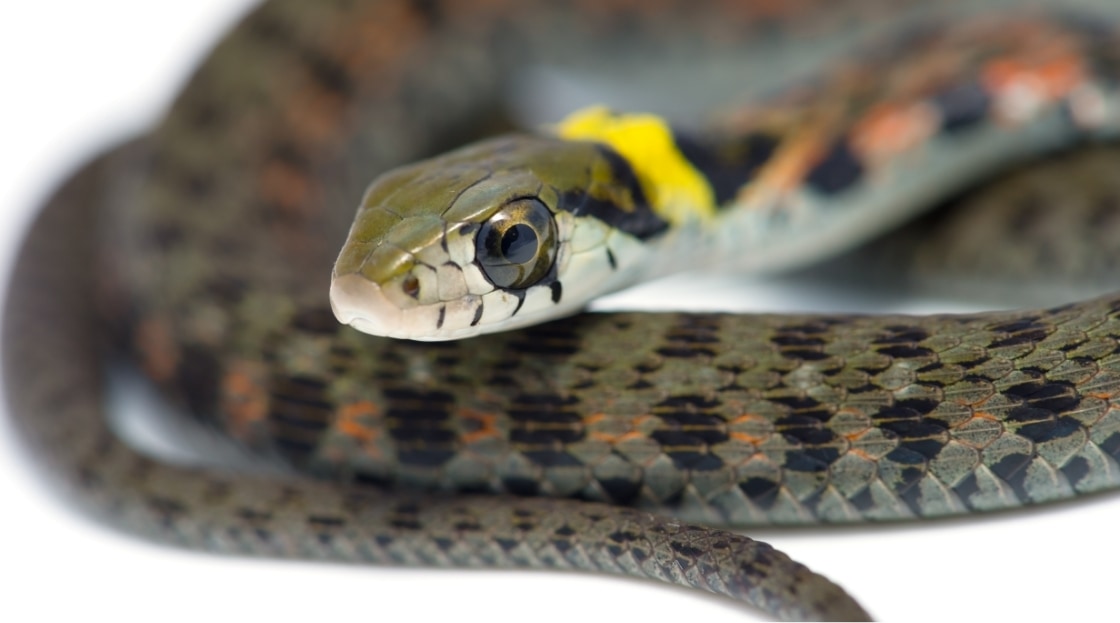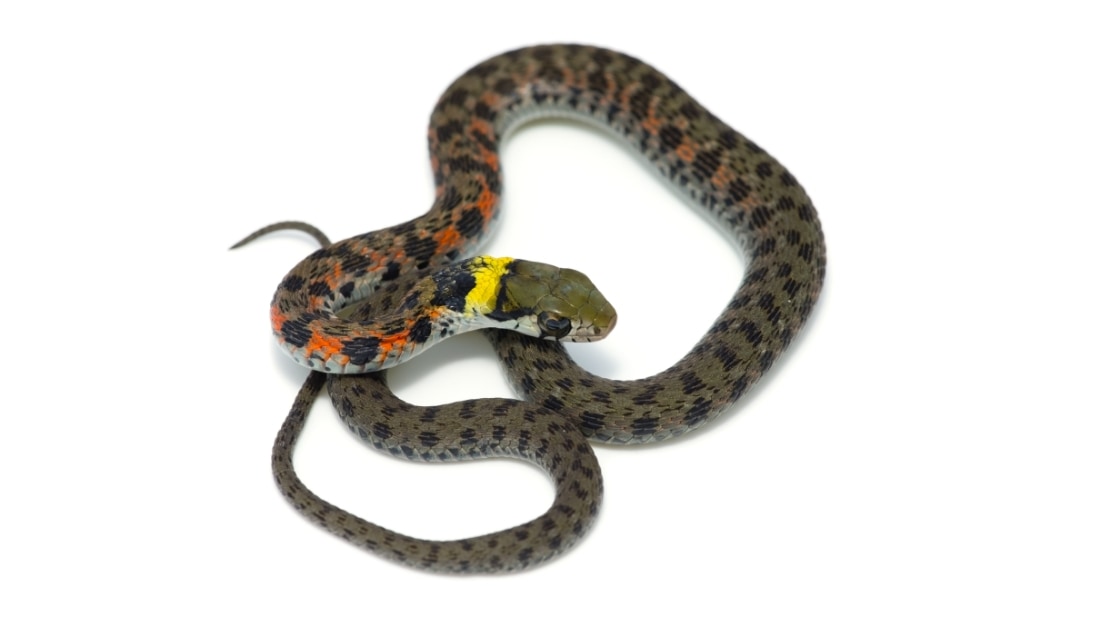Cases
“So cute” High school student bitten by venomous snake: what he did to overcome life-threatening situation
It is prohibited to reprint without permission from the Asahi Shimbun.
The approval number is “24-2714”.
Paid article Living with Patients
Kenji Tamura November 12,
2023 12:00
“Wow, seriously? That’s rare.”
The words came out of my mouth without me thinking.
A high school student from Hyogo Prefecture, Mr. A, was riding a “caster board” similar in shape to a skateboard by himself. He thought that what was on the road ahead was a tree branch, but as the distance decreased, he realized that it was a snake.
“I rode and ran on my caster board around the rice fields and farmland surrounding the house where I lived at the time. On that day, I had no after school club activities, so I wanted to get some exercise.”
I especially like reptiles. This was the first time I discovered one on my own.
Mr. A likes all living things, especially reptiles. He had seen snakes at school and other places before, but this was the first time he had spotted one himself.
The snake was dark blue and about one and a half meter long.
“I want to catch it and take it home.”
When I approached, the snake tried to escape into the grass.
“This is not a venomous Japanese pit viper. It must be a non-venomous Japanese rat snake. I often look at pictures of snakes in illustrated reference books, so I’m sure it’s this one. I held down the tail with my left foot, grabbed the neck with both hands, and lifted it up.”
“Your face is so cute.”
I took out my smartphone and took a picture, switching my hand from one side to the other as I held the snake’s neck. To avoid causing it any pain, I held it lower on the body with my right hand.
Now that the snake was able to move its neck freely, it turned towards me, opened its mouth wide, and bit into the back of my hand.
“Eh, are you going to bite?”
I was surprised, but I said, “Ouch, ouch, stop,” and continued to record the video. I felt the two fangs pierce the bones in my hand and press down on me.
As the pain throbbed, I began to feel angry. I wasn’t going to let go again.
After about three minutes, the snake let go off its mouth, and at this moment I held its jaws down firmly to prevent them from opening.
When I returned home, about a kilometer away, my mother and sister were there.
Actually, my mother didn’t dislike snakes either, and touched the bellies, saying how amazing they were. They felt elastic, like rubber.
Blood flowed down to my wrist
The blood from the back of Mr. A’s hand covered his fist and trickled down to his wrist. At the time, he didn’t realize that the amount of bleeding was unusual.
Mr. A brought the snake home and showed it to his mother for a while, then released it into a patch of grass near the house.
“I washed the wound with water and applied disinfectant, but the bleeding continued. It had been nearly 30 minutes since I was bitten. Even if it was just a minor injury, the bleeding should have stopped by now.”
Soon, the area around the bleeding spot began to swell.
“I thought it was a Japanese rat snake, which is non-poisonous, that bit me. But something seemed a bit odd.”
“My mother called the emergency room for advice and then drove me to the hospital.”
The patient was examined by Dr. C, the surgery department. It was a Sunday, and Dr. C was on duty. It was evening, so he was thinking about going home soon.
Dr. C wasn’t particularly surprised when he heard that a child had been bitten by a snake. There are many cases of viper bites in this area. The hospital also had antivenom that neutralizes viper venom.
After blood was taken and analyzed in the hospital’s laboratory, The patient was asked to take another blood sample.
“I told Mr. A, “Sorry it took so long. You’ll be able to go home soon,” and we waited for the results of the re-examination.”
“Then, a voice came from the examination lab saying, “There’s something wrong with the patient’s coagulation system.”
Indicating that he had disseminated intravascular coagulation (DIC), a condition in which tiny blood clots form all over the body, making bleeding more likely.
However, his platelet levels, which would normally have dropped at the same time, were normal, which couldn’t have been caused by viper venom.
In the worst case scenario, he could have suffered a cerebral hemorrhage and been put at risk of losing his life. Mr. A was suddenly admitted to hospital.
“Due to the coronavirus pandemic, it was difficult for my mother to accompany me, so she returned home in the evening.”
Mr. A’s hands continued to bleed, and no matter how many times he changed the gauze, they quickly turned bright red.
“The nurse told me, “Don’t move,” so I had no choice but to stay still in bed.”
Almost zero ingredients involved in hemostasis
The next morning, on the 26th, Mr. A ‘s blood fibrinogen level was “immeasurable” and had dropped to almost zero. It was presumed to be due to snake venom.
As DIC progressed, there was a risk of cerebral hemorrhage, etc. Bleeding from the wound also continued.
Dr. C searched the Internet for past case reports of venomous snakebites and found the website of the Japan Snake Center.
“I called the phone number listed as “Poisonous Snakes 110” and was connected to Atsushi Sakai (68), a senior researcher at the Japan Snake Research Institute (Ota City, Gunma Prefecture).”
After conveying Mr. A’s blood data, Sakai said, “I think there is a high possibility that it is Yamakagashi.” He then contacted Dr. Toru Hifumi (45) of St. Luke’s International Hospital (Chuo Ward, Tokyo).
Hifumi was primarily involved in the research into a method known as “serum therapy,” in which an antivenom against Yamakagashi venom is used as a treatment.
Speaking directly to Dr. C on the phone, Hifumi told him the diagnosis of a Yamakagashi bite and about the serum therapy.
The most notable feature of this snake venom is that it causes abnormalities in the blood’s clotting function, and there have been cases of death.
After hanging up the phone, Dr. C went on to explain the situation to Mr. A’s mother.
Mr. A is prone to bleeding even with the slightest vibration, and it is dangerous to transport him by helicopter to a large hospital. Although Yamakagashi antivenom has not been approved, it can be used for research purposes.
The mother was left speechless and unable to think when she was informed that her son’s death was imminent.
“At that moment, Dr. C’s cell phone rang. Then, he ran out into the hallway and I heard him call out, “Where is it coming from?”
The antivenom stored in about 10 places around the country, and it had not been decided where it would be shipped from. The phone call informed Dr. C that “it will be delivered to the hospital by motorcycle courier from Tokyo.”
“Because this was a clinical study, the hospital had to go through a special approval process, and my mother had to sign several documents and wait for the antivenom to arrive.”
Talking about Monster Hunter helped calm my anxiety.
In addition to Mr. A’s mother, his father also rushed to the hospital room where he was.
When will the antitoxin arrive? Will it be effective? The parents were very worried, but tried not to let Mr. A know about it. The father explained about the new monster that appeared in the popular game “Monster Hunter.” As Mr. A lay in bed, he excitedly said, “I want to play it when I get out of the hospital.”
The antivenom arrived around 9:00 p.m. Dr. C, who had been performing another operation during the day, immediately began preparing the infusion.
The antivenom was made using horse serum, and there was a possibility of an allergic reaction. The antitoxin was diluted and injected little by little to observe the reaction, and the process was carried out in stages. Fortunately, no allergic reaction occurred, and the full-scale infusion was completed around 1:00 a.m. on the 27th.
“The effects were immediate: the bleeding, which had been ongoing, stopped by morning, and my fibrinogen levels, which had been unmeasurable, shot up and soon returned to normal.”
“If it helps,” he said, donating blood
On October 1st, Mr. A was discharged from the hospital.
“If you don’t mind,” Dr. C called out to a parent and child who had come to see him at the outpatient clinic at the end of October. It was a request from Dr. Hifumi of St. Luke’s International Hospital, who asked if they could donate blood for research.
“If it could be of help to someone, then the father and son readily agreed.”
The blood will be stored at the National Institute of Infectious Diseases in Tokyo.
As research progresses, this finding will likely be used to develop new types of medicines that cause less risk of allergic reactions.
Through this experience, Mr. A has come to think, “I want to be someone who can save people’s lives.” For the time being, he plans to aim to become a paramedic.
“I don’t hate snakes anymore. In fact, I still really like them.”
“Although I was more careful than before, even after I moved to other town I still caught Japanese rat snakes and brought them home.”
A little over a year ago, a Yamakagashi bit him, but Mr. A ‘s feelings are the same as before.
“That face is still cute.”

This photo is not from Asahi Shimbun Digital

This photo is not from Asahi Shimbun Digital
If you have any comments or feedback, please send them to iryo-k@asahi.com with your name and contact information. (Kenji Tamura)